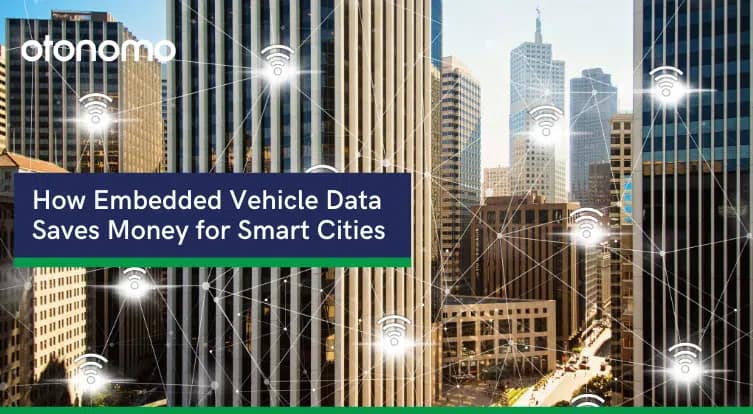Embedded Vehicle data Improves public services
Getting a city covered with multiple sensors can be expensive, but connected vehicles provide access to a huge array of embedded vehicle data collecting devices at a fraction of the cost. This data can be used in a number of ways to save money while offering all a smart city provides to citizens, from transportation to emergency services and beyond.
Think about something relatively small, like how integration with weather data gleaned from the temperature and rain sensors on connected vehicles could inform smarter pre-emptive measures such as gritting the road ahead of snowfall exactly when it’s needed, and with minimal resorting to costly emergency and over-time response.
Now consider data on a larger scale, how bus or train timetables could be adapted based on real-time usage; emergency services called out automatically when an accident occurs; or ensuring that vehicles and infrastructure are running at peak and optimal performance.
Smarter “just in time” infrastructure support
One way to achieve better traffic control in a smart city is through connecting traffic lights and dynamic road signs that respond to real-time traffic demands, managing the movement of vehicles on the road. In an urban context this means choosing how to use roads to their best advantage in an adaptive manner. Tactical urban solutions like dynamically dedicating lanes to delivery-only for example or opening lanes up at points of congestion.
Preventive road maintenance saves money both from fixing small problems before they have time to become larger problems. Data can help stakeholders make smart decisions about infrastructure maintenance. You could use friction data from ongoing traffic for example to implement preemptive road maintenance and plan ahead for it, look at how and when vehicles are using a specific bridge or tunnel and plan re-architecture at the right point in time to minimize disruption, or analyze how many electric vehicles are on the roads, before deciding on the number and placement of charging stations to deploy.
A smart city empowered by connected cars can go beyond traffic and change the way you manage public services, such as intelligent garbage collection alerting workers that they need to gather roadside trash. Better services for the public, and less costs on the back-end – win/win.
Start thinking outside the box when it comes to smart city ROI
Of course, not all benefits are monetary – and there are also many gains to be had from smart cities in terms of improved air quality, reduced congestion, better sustainability, and boosting quality of life for citizens and visitors alike. By using connected vehicles you’re looking at a way to save money for your smart city initiative – and get access to data right now.
Make some time to talk to one of our smart city data experts about accessing embedded data from connected vehicles. Schedule a call with a data expert









